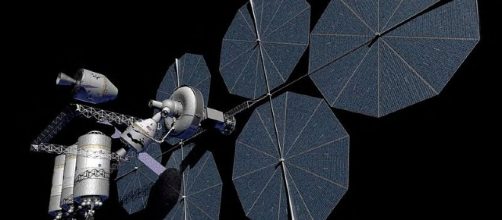The concept of mining Lunar Ice and refining it into Rocket Fuel has been around for the past few years. A recent study at MIT suggested that using the moon as a refueling depot would lower the cost and decrease the complexity of a mission to Mars, the idea being that the interplanetary ship would not have to carry all the fuel it needed all the way from Earth. According to LiveScience, a group of students has devised a plan for how that mining, refining, and refueling process might work. The students are Gary Li from the University of California, Los Angeles, Danielle DeLatte from the University of Tokyo, Jerome Gilleron from Georgia Institute of Technology; Samuel Wald from Massachusetts Institute of Technology, and Therese Jones from Pardee RAND Graduate School.
Robots prospecting and mining lunar ice
The plan involves three types of rovers. First, the Prospector rovers would roam about areas of the moon that observations from orbit have indicated bear deposits of ice. Then, the Constructor robots would build launch and landing pads as well as roads to where the ice has been located. Finally, the Mining robots would mine the actual ice and take it to a refining plant where it will be split into liquid oxygen and liquid hydrogen, the components of rocket fuel. The refining plant could be collocated at a lunar base or, as the Europeans prefer to call it, a moon village.
Refueling Depot in space
The next step will be to load the rocket fuel into a robotic shuttle and launch it into a refueling depot in space, similar to the deep space station where NASA is planning for crews to test technologies for an expedition to Mars.
The refueling base would be located at the L1 point where the gravities of the Earth and moon cancel one another out, about 85 percent of the way between the two worlds. The robotic shuttle would return to the fuel refinery for another load.
A ship headed for Mars or even a probe being sent to the moons of the Outer Planets would be launched into low Earth orbit with empty fuel tanks. Then a solar electric propulsion tug would tow the spacecraft to the refueling depot where its fuel tanks would be topped off. Then the ship would fire its engines and head the rest of the way to Mars or whichever other deep space destination has been designated. Thus a transportation infrastructure will have been established to support the movement from Earth orbit to cis-lunar space and beyond.


